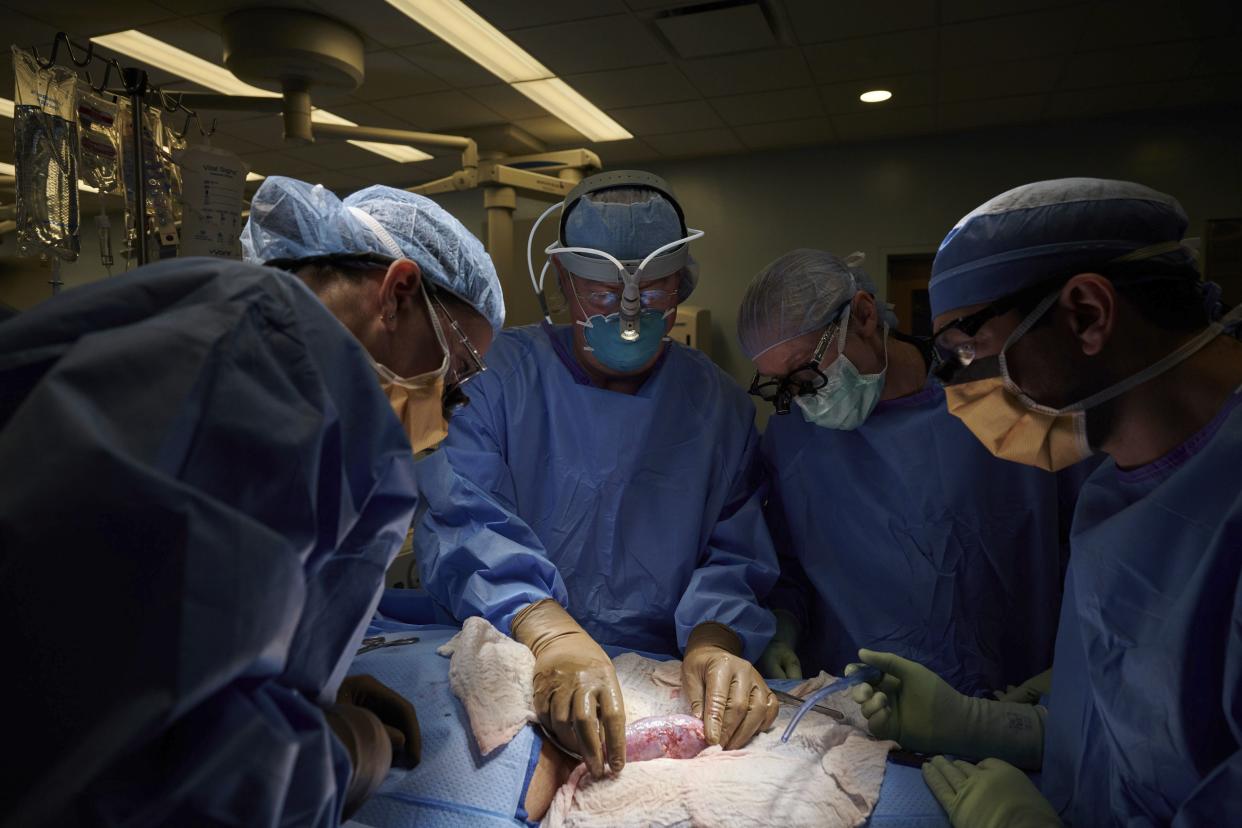Pig-to-human transplants get closer with huge kidney breakthrough
Doctors and scientists successfully attached a pig’s kidney to human blood vessels last month at NYU Langone, a significant breakthrough on the road to potential animal-to-human transplants.
All previous pig-to-human kidney attempts had failed because the human immune system rejected a foreign sugar — alpha-gal — and rejected the organ.
But this pig kidney was genetically modified to remove alpha-gal, and human blood vessels from a deceased woman accepted the organ and began filtering waste.
“It had absolutely normal function,” said lead surgeon Dr. Robert Montgomery, whose team observed the transplant for two days.

The woman’s family consented to the experiment because she was an organ donor, but her organs weren’t suitable for standard donation.
That’s only one of many ethical quandaries surrounding animal-to-human transplants (called xenotransplantation) as scientists and doctors grapple with the age-old question: Just because you can, does that mean you should?
With so many people desperately in need of organ transplants, xenotransplantation could save human lives. And pig body parts are actually rather common in some replacement surgeries, including heart valves and skin grafts.
Previous animal-to-human transplants, however, have seen strong pushback, including the use of baboons and other primates in the late 1900s.
With News Wire Services
